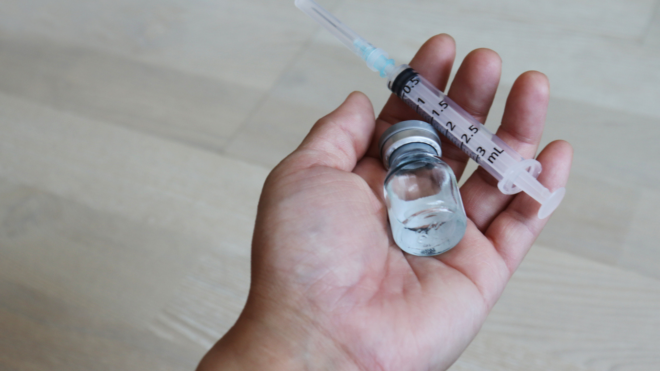
Marilyn Monroe may be an iconic blonde, but she certainly wasn't the first to make us adore this hair color. Back in the (seriously) olden days, women used to try to bleach their locks with everything from horse urine to pigeon dung. (We don't recommend you try that at home.) And still today, there are so many influential blondes that we see all the time in the media, such as Blake Lively, Jessica Simpson, and Anna Faris.
Whether you come by your blonde hair "legally" or make that faithful appointment with your stylist every six to eight weeks, here's what you need to know about this preternaturally playful hair color.
1. Being naturally blonde is pretty rare.
Only 2 percent of people in the world are natural blondes. (About one in 20 Americans are.) But that doesn't mean it's not popular. One in three women dyes her locks light enough to be considered blonde.
2. Blonde hair comes from a teeny-tiny genetic mutation.
How tiny? Think one letter change among 3 billion letters that make up a person's DNA.
3. Blondes aren't blondes forever. (Naturally, at least.)
Many kids born with light hair go dark before their tenth birthday, thanks to rising levels of eumelanin, a natural pigment that regulates the darkness of hair strands.
4. Having blonde hair doesn't necessarily mean having blue eyes.
It's a stereotype. Although red hair, light eyes, and light skin do tend to go together, blondies can have eyes that are blue, green, brown, and more.
5. There are 50 shades of gray ... and 30 shades of blonde.
Yep, there are really that many hair hues that can be considered blonde. For instance, Taylor Swift has café au lait locks; Gwen Stefani's are golden platinum; and Cara Delevingne rocks a gray-blonde. (Beyonce's a "brownde" — a brownish-blonde — just FYI.)
6. Blond-haired, blue-eyed men are blonde women's biggest fans.
The reason has roots in evolutionary psychology. Both blonde hair and blue eyes are recessive traits, so both parents must carry the gene for blonde hair to pass it on to their kids. Some scientists think men with light hair and eyes are instinctively drawn to women with the same coloring. That way, he'll know for sure he's the dad of any offspring.
7. Blondes not only have more fun -- they have MORE hair.
Most people have about 120,000 hairs on their head, but people with light-colored locks tend to have even more. The reason? Blonde hair is finer than other colors, so the scalp can hold more individual strands.
8. Many gentlemen (probably do) prefer blondes.
Several published studies have found that men find blondes more attractive than women with other hair colors. Blonde women are most likely to be picked up in a bar. Heck, they're also more likely to be helped by a man when they drop something on a sidewalk.
9. But there's a dark side to men's attraction, too.
Research published in the Scandinavian Journal of Psychology found that men tend to think blondes are usually needy, high-maintenance, and neurotic. (So, stop trying to pick us up in bars already then!)
10. Forget "dumb blonde" -- blondes makemenact dumb.
Although, not for the reasons you might think. When French men were shown pics of blonde women, and then were given a general knowledge test, they scored worse on it than when they looked at images of dark-haired women. The reason? Researchers say the stereotype of "dumb blonde" is so ingrained that men were simply behaving in kind. Oookay, or maybe they're just dumbfounded by our beauty!
11. But blondes get the last laugh!
Researchers at the University of Queensland found that not only are blonde women paid more than their peers with other hair colors, but they're also more likely to marry a wealthier man.





